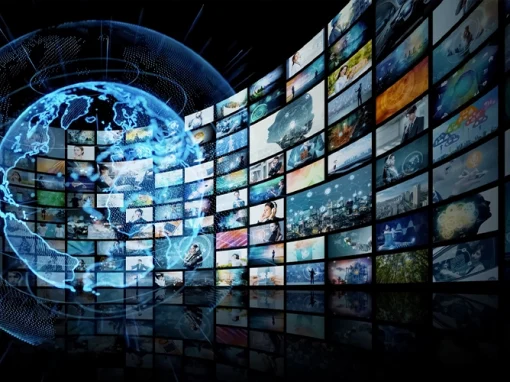The NBA has discreetly piloted a microtransaction-based model for access to select games – while nascent, this model represents another method to engage fans and monetize content.
Recently, the NBA has been quietly testing a new way for people to watch their content – a microtransaction-based offering that allows fans to watch the last quarter of a close or important game for $0.99.
While there has been no official confirmation from the league as to when -and if- these microtransactions will be available for widespread purchase, these types of smaller, event-driven transactions are a smart way to monetize existing and future OTT video platforms.
Taking a Page from a Different Game
Microtransactions were first pioneered in the video game industry more than 10 years ago as PCs and gaming consoles matured to the point where developers could offer small, optional content packages as an add-on to the base game. Downloadable content, or DLCs, have taken several forms throughout the years – originally, they were focused on larger expansions for existing games, but with the advent of smartphones, developers have pivoted towards offering cosmetics or in-game currencies that slightly modify the base game.
Microtransactions have become the dominant monetization model in mobile gaming and spawned a whole category of “free-to-play” games driven solely by microtransactions. The figures behind these games are staggering, with the top grossing PC game, League of Legends, drawing over $2B in revenue, and the top mobile game, Arena of Valor, at a close $1.9B.
These microtransaction-driven games rely on several aspects that appeal to human tendencies to drive purchases – these principles can also be applied effectively to the proposed NBA offering.
Drawing in the Customer
The NBA microtransaction model works by offering consumers an impulse-based decision with a low cost. If the offering works as expected, the user will receive a notification alerting them to an important or record-breaking game, prompting them to purchase access for $0.99. This allows the league to not only promote games more often, but also monetizes their content in a rapid, impulse-driven manner.
For many fans, there is little motivation to watch live games outside of their favorite teams, but they may elect to watch highlights of interesting games after they’ve finished. NBA games, while fast-paced, still take 2 or more hours to finish, and in an environment where there’s so much content for people to consume, viewers may not have the time or patience to sit through an entire game. This offering would solve both problems, focusing on exciting, important games and limiting the experience to a single quarter. Targeted consumers for this offering may not have planned on watching NBA content, but when provided the option and price point, think “why not?” and may be willing to pay for access.
Another key selling point is the price – the NBA currently offers their League Pass OTT service, with access to all out-of-market games, for a price of $28.99 / month for all teams, with additional offerings for commercial free or single-team streams. The $0.99 price point is significantly cheaper in this context, even cheaper than the $6.99 single-game option the NBA offers. At this price point, purchases become much easier for the consumer to justify, particularly when framed against the other content bundle prices.

A History of Innovation
It is not surprising that the NBA is the sports league that has chosen to test out new content and monetization options – it has been willing to innovate and try new options under the leadership of Commissioner Adam Silver, who remarked in 2017 that the viewing experience in live sports has not changed in the past few decades and needs to evolve to attracts younger viewers.[1] He even proposed a variant of this microtransaction model back in early 2017.[2] Recently, the NBA has piloted several new ways of viewing the game or engaging fans, such as games produced in virtual-reality (VR), partnering with Magic Leap for augmented reality (AR) -related content, or promoting team and fan engagement on social media. This type of microtransaction-driven model represents yet another way to increase the reach of the league, particularly among younger generations.
Unproven Model
Despite the apparent upside associated with the microtransaction model, it has yet to be proven in a live sports setting, and the execution / user experience will be key to drive user adoption. Given the time-sensitive, event-driven nature of the model, the user experience must be seamless and intuitive – waiting 5 minutes to process the transaction or grant access doesn’t work when the event is live. Additionally, it may be difficult to quickly and effectively inform consumers of this option – notifications may be blocked, or consumers may not see them until it’s too late. Unlike the fixed schedule of other limited-time events like HQ Trivia, NBA games start at different times and progress at different paces, making it problematic to have a set schedule.
The content rights associated with the model are also up in the air – these microtransaction broadcasts would only be for non-national games and likely be unavailable in either team’s DMA. Broadcast partners like ESPN and Turner are unlikely to give up the digital rights to their games, which typically involve higher-profile matchups as well as playoffs games. These types of games are more likely to prompt consumers to try the microtransaction model and may lower adoption if these rights cannot be secured.
Lessons for the Others
Other sports leagues may look to this new model and attempt to replicate it – the MLB and NFL already have robust OTT platforms built and this type of offering can increase uptake and engagement with their sport. They may choose a similar model or adjust based on the nuances of their respective games, but need to keep in mind that the price needs to be low and the content must be easily digestible.
In the future, the digital content players (e.g., Amazon, Facebook, Google) may look to use this type of microtransaction model if they are able to secure a wider array of sports rights – given their breadth of experience in developing and monetizing OTT platforms, these players may be better positioned to find the combination of price and content that is most appealing to consumers.
Sources:
[1] https://www.recode.net/2017/9/13/16304278/nba-twitch-adam-silver-tv-ratings-facebook-amazon
[2] http://www.latimes.com/sports/nba/la-sp-nba-silver-five-minutes-20170106-story.html





